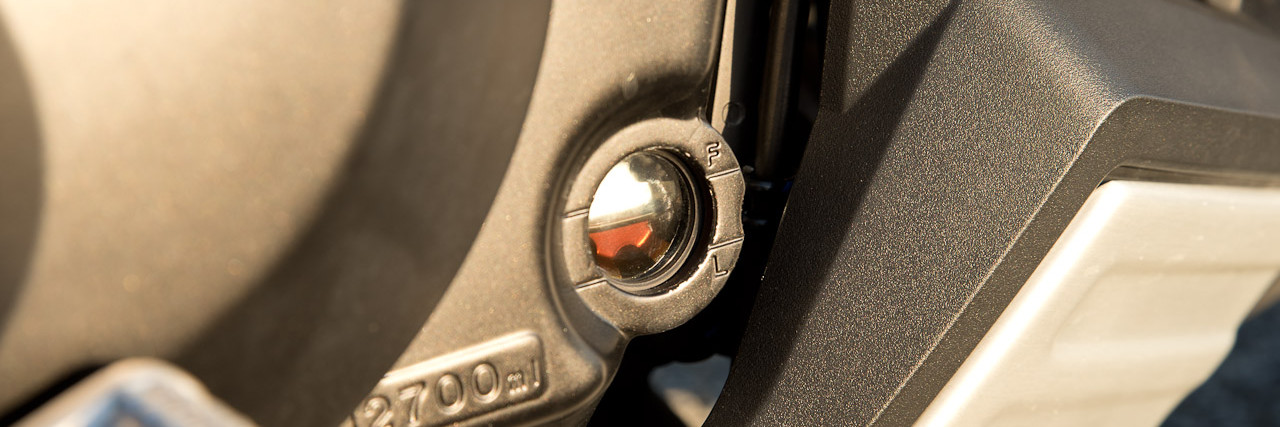Checking and changing the oil
A thin film of oil is all that prevents your motorcycle’s engine from grinding itself to death. Checking it and changing it regularly is a must.
With a unified engine/gearbox, most modern four-stroke motorcycles use the same oil to lubricate a high-revving, high-temperature engine and the closely-meshed cogs and clutch of the transmission. It’s a tough job, so checking, topping up and replacing your oil on schedule should be a top priority.
Recommendations for checking and changing the oil
- Check engine oil level every week or 500km. Some bikes have a dipstick, others have an oil-level inspection window. Make sure the bike is upright and level when you check, not on a hill or on its side stand.
- If the oil is anywhere under mid-way between the low and full marks, add the correct grade of oil sparingly until it shows full. Do not over-fill: it can damage the engine. Allow time for the oil to drain down to the sump before checking the new level.
- At the same time, have a good look at its colour. If you can, run some off the dipstick between your fingers. If it is black or the oil doesn’t feel silky smooth, replace it and the filter.
- Treat the manufacturers recommended oil change intervals as a maximum. You’ll do no harm, and potentially a lot of good, by changing more frequently.
Most modern bikes are designed to run on synthetic or semi-synthetic oil. They resist high temperatures and stress better than mineral oils but some older engines require mineral oil. The correct grade will be in the bike’s manual or you can look it up online. Always use what’s specified or ask your local dealer for advice.
Never let your engine run low on oil. Check it regularly and top up with the correct grade and type of oil.




